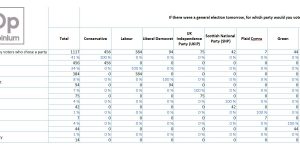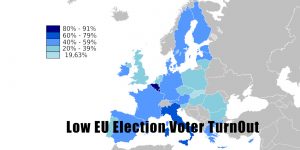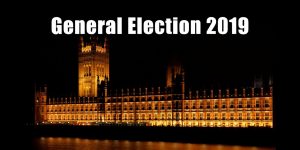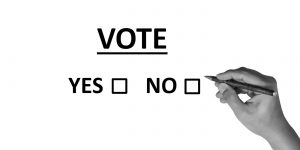The United Kingdom’s Exit from and new Partnership with the European Union White Paper
Annex A – Example Dispute Resolution Mechanisms
A.1 Provision for the interpretation of, and resolution of disputes arising under international agreements is commonplace. These provisions vary in nature. This Annex provides a number of examples which illustrate how other international agreements approach interpretation and dispute resolution. Of course, these are simply examples of existing practices – the correct approach for the agreement underpinning the future relationship between the EU and the UK will be a matter for negotiation.
EU-Canada Comprehensive Economic and Trade Agreement (CETA)
A.2 CETA is a broad agreement that includes the elimination of tariffs in many areas, more open access to services markets and provisions for firms to bid for public contracts. The agreement establishes a ‘CETA Joint Committee’, covering both questions on trade and investment, and those on the implementation and application of the Agreement. The Joint Committee, which is made up of representatives from the EU and Canada, will have the power to adopt interpretation of provisions of CETA which are binding on tribunals, making its decisions by mutual consent.
A.3 CETA provides for different tailored dispute settlement mechanisms depending on the identity of the parties or the subject matter of the dispute. Chapter 29 of CETA contains provisions for dispute settlement between the Parties to the Agreement.[99] In the first instance, these are to be resolved by consultation and voluntary mediation. If this fails, the dispute can be referred to an arbitration panel, the ruling of which will be binding. The composition of the arbitration panel is to be agreed between the Parties. Where the Parties cannot agree on the exact composition of a panel, a pre-agreed list of at least fifteen arbitrators (five of whom will be Canadian nationals, five who will be nationals of the EU and five who will be nationals of third countries) will be used to select a panel which includes one national of an EU country, one national of Canada and one national of a third country who will act as chair of the panel.
A.4 When the panel is established and comes to consider the dispute it is to endeavour to reach its ‘findings, determinations and recommendations’ by consensus, but failing that, such decisions can be made by majority.[100]
A.5 The arbitration panel will then present a confidential interim report. This interim report shall contain both findings of fact and determinations as to whether there have been any violations of CETA. The Parties can submit written comments on the interim report to the panel. At that stage the panel can decide to reconsider its report, further examine the issues or stick with its findings.
A.6 The panel will then issue its final report to the CETA Joint Committee and to the Parties.
This final panel report is binding. The responding Party will then have 20 days to inform the other Party and the CETA Joint Committee of its intention in respect of compliance.
A.7 If the ‘losing’ Party fails to comply then the ‘winning’ Party shall be entitled to either suspend obligations or receive compensation. Obligations may only be suspended up to the level of the nullification and impairment caused by the original breach and, if the parties disagree over this, the matter can be referred to arbitral panel. These remedies are temporary only and are to be lifted when the losing Party takes the necessary measures to comply with the final panel report.
A.8 Chapter 8 of CETA also makes provision for the settlement of investment disputes which arise under the Agreement. Chapter 8 confers a number of protections on investors and ‘covered investments’ covering matters such as compensation for losses, expropriation of property and national (i.e. non-discriminatory) treatment. In the event that a dispute arises, provision is made for consultations between the parties and for possible mediation. If a mutually satisfactory resolution is still not arrived at, the matter can be referred to an arbitral tribunal established under Chapter 8. Under CETA, 15 members of the tribunal will be appointed initially: five Canadian nationals, five EU nationals, and five third country nationals.
This tribunal sits in panels of three (with one panellist from Canada, one from the EU and one from neither). An Appellate Tribunal is also established which can review tribunal awards.
The Appellate Tribunal can modify or reverse awards of the Tribunal when, for instance, the tribunal made an error in applying or interpreting the law or a manifest error in its appreciation of the facts. Awards can take the form of monetary (but not punitive) damages or restitution of property.
A.9 There are further chapter-specific mechanisms used to resolve disputes arising under Chapters 23 (trade and labour) and 24 (trade and environment).
EU-Switzerland bilateral arrangements
A.10 A large number of bilateral agreements govern the EU-Switzerland economic and trade relationship.
A.11 Each agreement applies different elements of EU law to Switzerland. Some, like the agreement on the free movement of persons, apply substantive sections of EU law. Others, for example the free trade agreement, do not.
Annex A – Example dispute resolution mechanisms
A.12 Each of the principal agreements establishes its own ‘joint committee’. As with CETA, these joint committees are made up of representatives of the EU and Switzerland. In each instance, they have responsibility for managing the agreement, ensuring its proper application, and taking any steps required to implement the adjustments or revisions provided for in the agreement itself.
A.13 All of the bilateral agreements are treaties, and hence give rise to binding commitments in international law. Should disputes under the principal agreements not be resolved by the relevant joint committee, the ultimate remedy would ordinarily be termination, and some of the agreements are linked, such that if one is terminated, so are others. With a few exceptions, there is usually no recourse to a court or tribunal.
North American Free Trade Agreement (‘NAFTA’)
A.14 NAFTA has clear rules on dispute settlement. These mechanisms cover investment disputes (Chapter 11), the review of anti-dumping and countervailing duty determinations (Chapter 19) and the main dispute settlement procedure (Chapter 20). Under Chapter 20, in the first instance, the governments concerned aim to resolve any potential disputes amicably through NAFTA’s Committees and Working Groups or other consultations. If it is not possible to reach a mutually acceptable solution, then NAFTA provides for expeditious and effective
panel procedures. Special procedures apply for matters such such as investment, financial services and the review of anti-dumping and countervailing duty determinations.
Mercosur
A.15 Under the treaties establishing Mercosur, in the first instance, disputes are resolved by direct negotiations. If no agreement is reached during direct negotiations or if the dispute is only settled in part the parties can (by mutual agreement) submit the dispute to the Common Market Group (political representatives of member states) to issue a recommendation.
Alternatively the parties may submit the dispute to the ad hoc arbitration tribunal. Decisions of the ad hoc tribunal may be appealed on a point of law to a Permanent Review Tribunal which can issue a decision, by majority agreement. Decisions of the Permanent Review Tribunal are final and are binding on the Parties. There is also a mechanism for disputes to be referred directly to the Permanent Review Tribunal by mutual agreement.
New Zealand-Korea Free Trade Agreement
A.16 The New Zealand-Korea Free Trade Agreement provides a mechanism for the resolution of disputes. The focus is on co-operation and consultation to reach a mutually satisfactory outcome. The Chapter on dispute settlement (Chapter 19 plus Annex 19-A) sets out a process for the establishment of an arbitration panel. The parties must comply with the findings and rulings of the panel. In the case of non-compliance, the complainant may be entitled to compensation or to suspend the benefits of the FTA. The parties may also agree alternative forms of dispute resolution, including through good offices, conciliation, mediation or even via the WTO process. A separate Chapter of the Agreement (Chapter 10) sets out the process to be followed in relation to investment disputes.
World Trade Organisation (WTO)
A.17 Within the WTO, a dispute can arise when one country adopts a trade policy measure or takes action which another WTO member considers to be in breach of its WTO commitments. Settling disputes is the responsibility of the Dispute Settlement Body (DSB), which comprises all WTO members.
A.18 The general approach on WTO disputes is as follows: the first stage is consultation, where countries in dispute see if they can settle differences themselves. The DSB has authority to establish a ‘panel’ to consider the merits of the particular dispute. Whilst technically a panel simply advises the DSB on its resolution of the dispute, in practice its conclusions are rarely overturned as this would require a negative consensus including the Party or Parties on the other (i.e. winning) side of the dispute; if the panel decides that the disputed trade measure does break a WTO agreement, it will recommend that the measure be brought into conformity with WTO rules, and its report becomes the ruling of the DSB unless it is rejected by a majority of WTO members. It is possible to appeal the report on a point of law. The DSB would set up an Appellate Body that can uphold, modify, or reverse the panel’s findings. The DSB must then accept or reject the appeal’s report – and rejection is only possible by consensus.
A.19 The final ruling of the DSB must be complied with – if this does not happen within a ‘reasonable period’, the losing party must enter into negotiations with the complainant to determine mutually acceptable compensation. If no agreement on compensation is reached within 20 days, the complainant may ask the DSB for permission to retaliate. Retaliations are intended to be temporary and designed to encourage the other country to comply.
A.20 In effect, this means that whilst decisions of the DSB create an obligation on the part of the losing party to comply with WTO rules, enforcement can be achieved by various means – including amicable settlement, compensation, or the suspension of trade concessions.[101] Indeed, it was for this reason that the CJEU found in the case of Portugal v Council that a DSB decision did not oblige the losing party to achieve full implementation of its recommendations, where the possibility of temporary compensation or retaliatory measures remained available.[102] In other words, the outcome was prescribed, but not the means.[103] This contrasts with the position under EU law, where there is a right to an effective remedy from a judicial body.
[99] CETA allows for parties to use either the bespoke dispute settlement procedure provided for under CETA, or the WTO dispute settlement procedures, but only one or the other. Some Chapters of CETA are also carved out of the dispute resolution mechanism – see for instance Chapter 3 on Trade Remedies or Chapter 17 on Competition Policy.
[100] Annex 29-A, Comprehensive Economic and Trade Agreement between the European Union and Canada (CETA 2016).
[101] ‘Dispute Settlement Understanding (DSU)’, WTO, 1994.
[102] Portugal v Council (C-149/96), Judgement of the Court, 1999.
[103] This is similar to the US approach, which similarly refuses to accord direct effect to GATT obligations.
Annexes
A: Example dispute resolution mechanisms
B: UK/Ireland
The United Kingdom’s Exit from and new Partnership with the European Union White Paper











